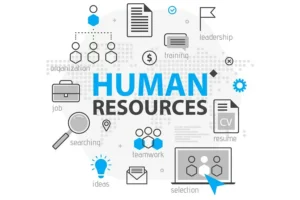The Importance of Sentiment Analysis in HR Survey Analysis: Uncovering the Real Voice of Employees
Employee surveys have long been a cornerstone of HR efforts to understand engagement, satisfaction, and workplace culture. However, traditional surveys often provide only a surface-level view of employee sentiment. This is where sentiment analysis—the process of using natural language processing (NLP) to identify emotions in text—comes into play. By analyzing not just what employees are saying but how they feel, sentiment analysis gives HR teams deeper, actionable insights, enabling more strategic decision-making.
Why Sentiment Analysis Matters in HR
Sentiment analysis allows HR teams to assess the emotional tone of responses in open-text survey questions, feedback forms, and other communication channels. This means moving beyond binary “satisfied” or “unsatisfied” metrics to reveal true feelings, whether positive, negative, or neutral. It captures subtle emotions like frustration, enthusiasm, or disinterest that are often missed in traditional survey analysis.
This richer understanding of employee sentiment helps organizations achieve three key outcomes:
- Identify Emerging Issues Early: Sentiment analysis provides early warning signs of discontent or dissatisfaction, enabling HR to address issues before they escalate. If, for example, many employees are expressing frustration or burnout, proactive steps can be taken to address workload or support mental health, preventing long-term disengagement.
- Enhance Employee Engagement: By accurately measuring sentiment, HR can better understand what motivates employees and what barriers they face. When sentiment analysis reveals strong enthusiasm around specific initiatives or company policies, these positives can be reinforced and celebrated to boost morale and drive engagement.
- Support Retention Efforts: Sentiment analysis helps pinpoint areas of dissatisfaction that might otherwise go unnoticed, which can be critical for employee retention. If data suggests growing resentment around a particular policy or leadership style, organizations can intervene before valuable employees consider leaving.
How Sentiment Analysis Transforms HR Surveys
Incorporating sentiment analysis into HR survey analysis enriches feedback, converting open-text responses into quantifiable insights that are easier to interpret. Tools like SentiFy, for instance, use NLP to analyze the language in employee comments, providing a snapshot of overall sentiment and highlighting trends over time. This empowers HR teams to track employee emotions across departments, locations, and demographics, creating a clearer picture of organizational health.
Sentiment analysis also brings flexibility to HR, allowing them to understand sentiment across various touchpoints, including onboarding feedback, performance reviews, exit interviews, and employee engagement surveys. By examining sentiment in context, HR professionals can gain a holistic understanding of the employee journey and respond strategically at each stage.
Building a People-Centric Workplace with Sentiment Analysis
At its core, sentiment analysis enables organizations to listen to employees more effectively. Instead of relying solely on numbers, HR can interpret the emotional layers behind employee feedback. This not only builds a people-centric culture but also demonstrates to employees that their feelings are valued, which strengthens trust and loyalty.
In today’s competitive job market, where employee experience is a top priority, sentiment analysis offers a competitive edge. It transforms HR surveys from static feedback tools into dynamic resources that drive positive change, ultimately enhancing employee well-being and organizational performance.
Getting Started with Sentiment Analysis in HR
If you’re looking to integrate sentiment analysis into your HR surveys, platforms like SentiFy can help make it easy. SentiFy’s intuitive interface and powerful NLP tools allow HR teams to analyze sentiment trends, visualize data insights, and identify actionable takeaways without needing advanced technical expertise.
Embrace the power of sentiment analysis to make smarter, more empathetic HR decisions and cultivate a thriving workplace where employees feel truly understood.


